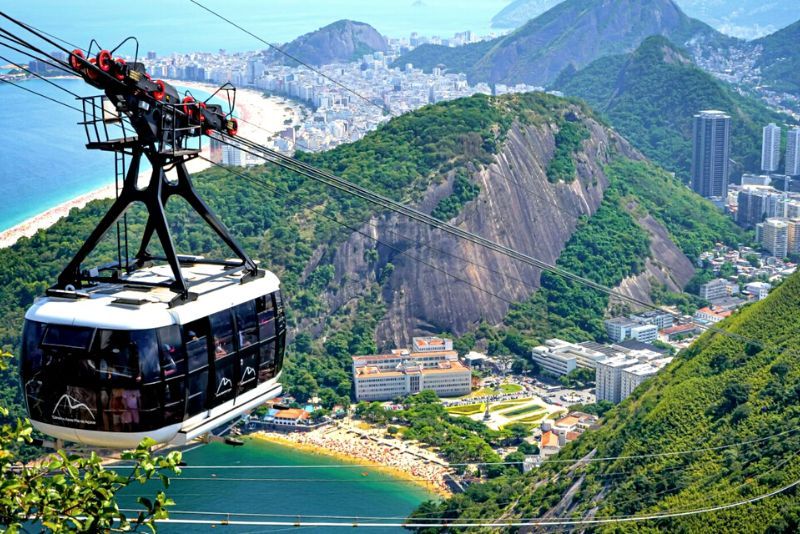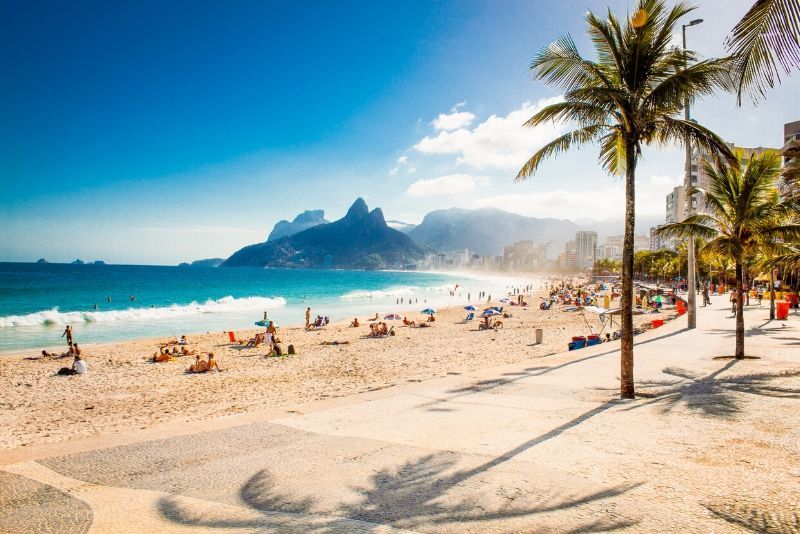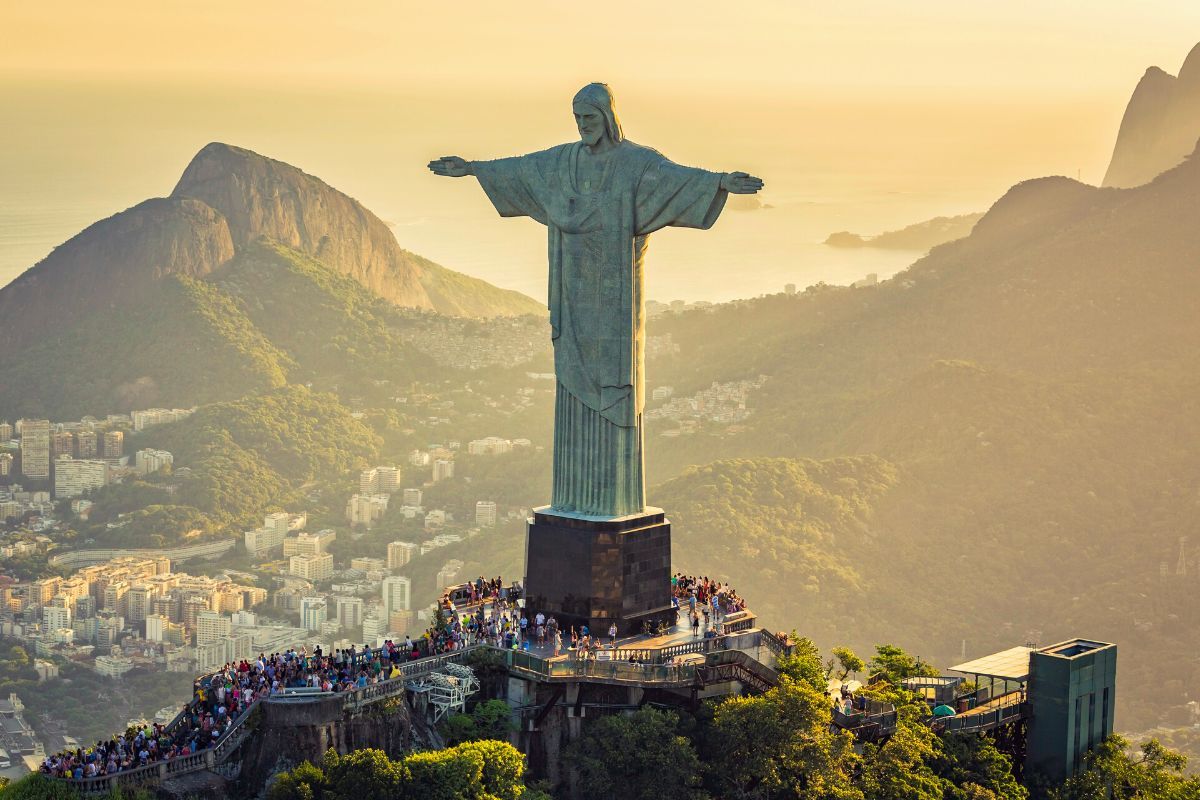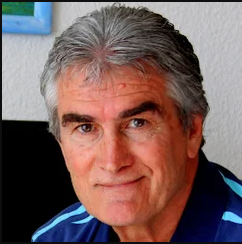Christ Redeemer - Corcovado: Tickets and Tours
The astonishing Christ the Redeemer statue stands on the peak of Corcovado Mountain, the highest point in the city of Rio de Janeiro.
Understandably, it represents Rio’s most iconic city postcard and appears on every city tour itinerary. Apart from the aesthetic wonder of the statue, the site offers fantastic views of the city’s surrounding areas.
The astonishing Christ the Redeemer statue stands on the peak of Corcovado Mountain, the highest point in the city of Rio de Janeiro.
Understandably, it represents Rio’s most iconic city postcard and appears on every city tour itinerary. Apart from the aesthetic wonder of the statue, the site offers fantastic views of the city’s surrounding areas.

(0/24) checking Musement...
The astonishing Christ the Redeemer statue stands on the peak of Corcovado Mountain, the highest point in the city of Rio de Janeiro.
Understandably, it represents Rio’s most iconic city postcard and appears on every city tour itinerary. Apart from the aesthetic wonder of the statue, the site offers fantastic views of the city’s surrounding areas.
To make the most of your Rio stay, book your tickets and tours to Christ the Redeemer with other major attractions on a half-day or full-day tour.

Here's all you need to know about Christ Redeemer, one of the most exciting attractions in Rio de Janeiro.
How much do Christ Redeemer - Corcovado tickets cost?
Christ the Redeemer ticket prices:
- Adult – Low Season: R$83,50 (US$16)
- Adult – High Season: R$105,50 (US$20)
- Child (5-11 years): R$60,00 (US$12)
- Elderly (over 60 years, living in Brazil): R$30,00 (US$6)
- Promotional ticket: R$65,50 (US$13).
You can take the official vans from Praça do Lido in Copacabana and at Città America in Barra da Tijuca.
Who is eligible for discounts?
Discounts apply during the low season for the tickets.There is no reduction for students, but children up to 4 years enter for free.
Elderly Brazilian or international residents and children from 5 years old pay at a reduced rate, on presenting an official document with photo.
Should you book in advance?
It is highly recommended to book in advance. You can reserve the best time slot – early morning – and be sure that tickets are not sold out.
What are the best Christ Redeemer - Corcovado tours?
Full day tour: Christ the Redeemer, Sugar Loaf, Maracana and Selaron with lunch

Explore Rio de Janeiro’s most important attractions during this Christ the Redeemer-Corcovado full day tour with a local guide.
During an extensive 8-hour tour you will travel through the Tijuca Forest, go to the top of Corcovado and the top of Sugar Loaf Mountain.
Then enjoy lunch at a Brazilian steakhouse before visiting the famous Maracanã Stadium and Sambadrome.
You can go straight to your meeting point, or request pickup from your hotel. Pass by Avenida Atlantica Avenue and get a panoramic view of the famous Copacabana beach.
Here you will see the statue of the famous Brazilian poet, Carlos Drummond de Andrade. Next you will pass by the edge of the Ipanema Beach and by the Tijuca Forest en route to Christ the Redeemer.
You will go by van up the Corcovado Mountain to see the magnificent Christ the Redeemer statue. Next you’ll visit the famous Maracana Stadium, home of Brazilian soccer, and pause at the Bellini Statue (entry admission excluded).
At Sambadrome, browse a store with samba products. You will visit the Maya pyramid type Metropolitan Cathedral of Saint Sebastian and stop at colorful Escadaria Selaron for photos.
Then go for the cable car ride to Urca Hill and wait for the second one to Sugar Loaf Mountain. You will enjoy a delicious barbecue lunch in a local Brazilian local steakhouse (lunch included but not drinks).
Ascend Sugar Loaf Mountain by cable car, first to Urca Hill and then up Sugar Loaf Mountain for magnificent views of the city and bay. The tour duration is 8 hours and costs US$130 per person.
Christ Redeemer by train and city highlights morning tour

On this half-day guided tour of Rio de Janeiro, you can experience some of the flamboyant city’s most iconic attractions.
Think of the towering Christ the Redeemer statue, the famous Maracanã Stadium, the Sambadrome, the Selarón Steps and the Metropolitan Cathedral. See these city highlights and more from a comfortable, air-conditioned bus.
You will be picked up from your hotel in Rio, and driven to the Cosme Velho station to board the Corcovado Train. It takes you through tropical forest in about 20 minutes to the top of Corcovado Mountain.
Once at the top, you can admire the majestic Christ the Redeemer statue, standing 30 meters tall with an outstretched arm span of 28 meters. It has been designated as one of the New Seven Wonders of the World in 2007.
Back from the mountain, you will pass the legendary Maracanã Stadium, the stage of two Soccer World Cup finals and one Olympic Games. Continue to Sambódromo, the home of Rio's famous Carnival.
You can afterwards visit the modern pyramid-shaped Metropolitan Cathedral, showing the architectural influence of the ancient Mayan pyramids. You can then admire the colorful tiles of the world-famous Selarón Steps.
After your tour, you will be returned to your pickup location. The tour lasts for five hours and costs about US$80 per person.
Christ the Redeemer by van and Selarón Steps
This whistle-stop half-day tour to Christ the Redeemer-Corcovado is the perfect introduction for those travelers visiting Rio de Janeiro for the first time.
Tour in an air-conditioned car with your guide doing the planning and buying entrance tickets.
Head directly to the meeting point at Hilton Rio de Janeiro Copacabana, or request pickupfrom your hotel. First you’ll drive up to Corcovado Mountain, where you can marvel at the majestic 30 meters-tall Art Deco statue of Christ the Redeemer.
You will pass by Santa Teresa, a famous neighborhood with narrow cobblestone streets and a unique cultural flavor. Continue to the neighborhood of Lapa, the quarter known for Rio’s traditional nightlife and as the home of the Carioca Aqueduct.
Your next visit is to the well-known Escadaria Selaron, one of the city’s most iconic landmarks. The brightly colored tiles of Selarón Steps were created by the Chilean-born artist Jorge Selarón, as his tribute to the Brazilian people.
Food and drinks are available to buy at Corcovado and at Selaron. The duration of the tour is four hours and costs about US$60 per person.
Are there any combined tickets or tours including Christ Redeemer - Corcovado and other attractions?

Combined tickets or tours including Christ the Redeemer in the itinerary will save you time and money should you wish to see several attractions in a day or two. There are several such combined tours on offer:
- The Best Helicopter Flight - Sugar Loaf and Christ the Redeemer: Marvel at some of Rio de Janeiro’s most beautiful tourist attractions during an exciting helicopter flight. These include the Copacabana and Ipanema Beaches, the Sugar Loaf, Christ the Redeemer and Maracanã.
- Guanabara Bay cruise with lunch and Christ Redeemer by van: Enjoy the beauty of Rio de Janeiro from the Guanabara Bay and from the Corcovado Mountain. Go on a van ride through the magic Tijuca Rainforest, ascend up to Corcovado Mountain and admire the magnificent Christ the Redeemer statue.
- Christ the Redeemer, Sugar Loaf and Copacabana Beach - From Cruise Terminal: This sightseeing tour from the Rio Cruise Terminal is ideal for visitors pressed for time, with transports around Rio in air-conditioned comfort. The tour includes entrance tickets to the Christ the Redeemer statue and Sugar Loaf Mountain.
- Combo tour Rio by day - Corcovado, Christ Redeemer, and Sugar Loaf with lunch and Ginga Tropical show: On this full-day guided tour you can admire the Christ Redeemer on Corcovado Mountain, the Sugar Loaf, and enjoy the Ginga Tropical Show and a barbecue lunch.
What will you see?

The Christ the Redeemer statue stands majestically on top of Corcovado, a mountain of 710 meters high and covered in dense Atlantic Forest bush.
The statue itself towers 30 meters tall, with an impressive outstretched arm span of 28 meters. Its construction started in 1922 already, and took nine years to complete. The ambitious project was funded by the Catholic community in Brazil.
The concept of building such a huge Christ statue was first mooted in the 1850s to honor Emperor Pedro II’s daughter and the princess regent of Brazil, Princess Isabel.
The idea of the statue was dismissed, however, and it was only in 1920 that the Catholic community re-introduced the notion of erecting such a massive statue. Creatively, the Christ the Redeemer statue was a multinational effort.
It was created by the French sculptor Paul Landowski and then built by Brazilian engineer Heitor da Silva Costa and the French engineer Albert Caquot. The Romanian artist Gheorghe Leonida was the creator behind the Christ’s face.
Initially, the design involved a large Christ holding a globe in one hand and a cross in the other hand. Later it was modified to represent the figure you see today, with the arms spread out wide.
According to Encyclopedia Britannica, it is the largest Art Deco-style sculpture in the world. The statue is made of reinforced concrete and covered in a mosaic of thousands of triangular soapstone tiles.
The statue weighs a massive 635 metric tons and it is astonishing that it was assembled in parts and then carted up the Corcovado Mountain.
All these parts used to build the Redeemer statue were transported up the hill using the old railroad opened in 1884 by emperor Dom Pedro II. This old railroad still serves as access to the base of Christ the Redeemer.
Because of exposure to severe weather, including lightning strikes, the statue has required several renovations over the years. In February 2008 and January 2014, heavy lightning damaged parts of the Christ, also severing a finger.
It is noticeable that the replacement stones are of darker hue as sufficient quantity of the original lighter stone is now unavailable to renovate it.
To celebrate the statue’s 75th anniversary, a chapel at the base was consecrated in 2006 to the patron saint of Brazil, Our Lady of Aparecida.
How to get there?
There are two ways to get to the Christ the Redeemer base – the cog train or the vans of the Paineiras-Corcovado Consortium.
For the Corcovado cog train, head to Corcovado Station, from where your access to the statue will be direct to Christ the Redeemer’s base. The official vans leave from Paineiras Visitors Center.
What are the opening times?
Christ the Redeemer is open between 8 AM and 7 PM. The last bus to town leaves Corcovado at 6:30 PM.
When is the best time to visit the Christ Redeemer - Corcovado?
During Christmas and Carnival it is most crowded, while weekends also get busy. The best time is early morning during the week, before 8:30 AM or afternoon after 3:30 PM. There are less visitors and it’s cooler.
Early in the morning is also better for photos when the sun is not overhead. Getting a clear shot during mid-afternoon is a problem with the sun right behind the statue.
Which other attractions can be visited in Rio de Janeiro?
Travel tips
- Make sure to book your tickets to Christ the Redeemer – Corcovado in advance.
- Eateries at the top of Corcovado tend to have long waiting lines, so take water and some snacks.
- Take out travel insurance.
- Wear light, comfortable clothes and shoes.
- Bring a cap, sunglasses and sunscreen.

